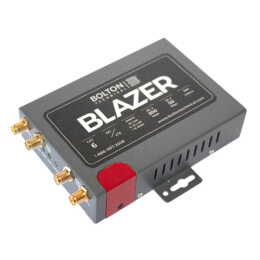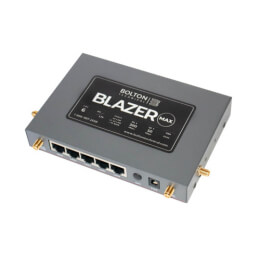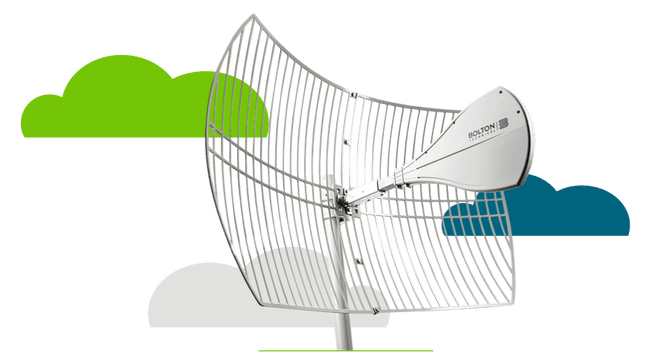
WiFi Frequencies 101: Maximize Your Internet Connectivity
Why WiFi Frequencies Matter
WiFi is used by many devices – from routers to cell phones, to even appliances. Wireless internet connectivity is achieved via WiFi frequency bands. The bands your devices connect to play a role in the speed and coverage of your WiFi connection. Here is what you need to know about WiFi frequency bands to improve your internet experience.
What are WiFi Frequency Bands?
Frequency bands refer to a range of frequencies used to wirelessly transmit data between devices. Within the radio frequency (RF) spectrum, ranging from 30 Hz to 300 GHz, there are bands allocated for TV, AM/FM Radio, cellular, WiFi, and more.
WiFi operates on frequency bands 2.4 GHz, 5 GHz, and 6 GHz. The characteristics of these WiFi bands impact:
- The speed at which the data travels from one device to another, and
- How far the data can travel.
Higher frequency bands have short wavelengths. This allows the transmission of more data at a faster rate over short distances. Lower frequencies, on the other hand, have longer wavelengths. They offer slower speeds but greater range.
What's the Difference Between 2.4 GHz, 5 GHz, and 6 GHz?
2.4 GHz WiFi Band
The 2.4 GHz band is the most widely used for WiFi connectivity, though it is not exclusive to WiFi. There are tons of electronic devices that use this band. Examples include microwaves, Bluetooth, and baby monitors. With so many devices operating on the same band, WiFi connectivity on this band can be affected by congestion and RF interference.
Despite that, it offers the best range out of all WiFi bands. Under optimal conditions, signals can travel about 150 feet indoors. Having longer wavelengths allows for better wall penetration, facilitating a greater coverage area. However, building materials can decrease range and signal strength.
Supported speed, which is probably what most care about, is lower than that of the other two bands. The 2.4 GHz band supports speeds up to 300 Mbps. However, results will vary across devices.
Due to its characteristics, this band is best for transmitting small amounts of data across long distances. This includes browsing the web, sending emails, and the like. It will likely not provide the best experience for gaming or streaming.
5 GHz WiFi Band
The 5 GHz WiFi band is occupied by fewer devices, decreasing congestion and interference issues. Connectivity is sure to be smoother on this band than on the 2.4 GHz band.
Using higher frequencies, this band can transmit data at a faster rate. Max speed is 1300 Mbps or 1.3 Gbps. That’s more than double what the 2.4 GHz band offers. It’s better for data-demanding applications, such as gaming, streaming, and video calls. Keep in mind, though, that speed will vary across devices.
The trade-off is penetration capabilities and range. 5 GHz frequencies can only travel about 50 feet. While that may sound like it's enough to keep your game console connected two rooms from the router, obstacles present a challenge. Walls and furniture block or severely degrade 5 GHz signals, further decreasing range as well as connectivity reliability.
For optimal performance, devices using this band should be located relatively close to the router.
6 GHz WiFi Band
The 6 GHz WiFi band is the least crowded of all. This is because it’s pretty new to the market. It was made available for use in 2020. So, not all devices can connect to it. To access the 6 GHz band, or any band for that matter, the AP (cellular router) and client device (cell phone, tablet, etc.) must support it. The only devices that are compatible with this band are WiFi 6E devices (more on this later).
Out of all three bands, this one offers the shortest range and fastest speeds. There is not much data available on the max theoretical speeds or range. Some sources state the 6 GHz band can deliver max speeds of 2 Gbps while others say 9.6 Gbps. However, the latter does not seem accurate, as that is the theoretical speed for the WiFi 6 standard, which is not the same as 6 GHz. Some tests reveal that 6 GHz signals can’t reach over past 50 feet.
Like the 5 GHz band, the 6 GHz band is best suited for data-demanding devices located close to the router.
Which WiFi Bands Can I Connect To?
All WiFi devices are built to a specific WiFi standard, technologically known as 802.11. These standards define the frequency bands to which a device can connect to. Like cellular networks, 4G and 5G, there are different generations of WiFi standards.
- WiFi 1 (802.11 b) devices only support the 2.4 GHz band.
- WiFi 2 (802.11 a) devices only support the 5 GHz band.
- WiFi 3 (802.11 g) devices only support the 2.4 GHz band.
- WiFi 4 (802.11 n) devices support the 5 GHz and 2.4 GHz bands.
- WiFi 5 (802.11 ac) devices support the 5GHz band. Though, many WiFi 5 devices were also built with WiFi 4 technology to support the 2.4 GHz band.
- WiFi 6 (802.11 ax) devices support the 5 GHz and 2.4 GHz bands.
- WiFi 6E (802.11 ax Extension) devices support 6 GHz, 5 GHz, and 2.4 GHz bands.
You can identify the WiFi standard of your device by checking its specs.
What WiFi Bands Do Routers Use?
Access points, like routers, can be single-band, dual-band, tri-band, or quad-band.
- Single-band routers only use one band, specifically the 2.4 GHz band, to send and receive data from connected devices. These routers are typically the most affordable, but performance can be limited.
- Dual-band routers use both the 2.4 GHz and 5 GHz bands to transmit or receive data. There are two types of dual-band routers. Selectable dual-band routers support both frequencies but only work with one at a time. You’re able to select the band that best fits your needs. Simultaneous dual-band routers use both bands at the same time. This enables two independent networks, increasing flexibility and bandwidth. Our Bolton Blazer cellular routers are all dual-band.
- Tri-band routers use three frequency bands simultaneously. WiFi 5 and WiFi 6 tri-band routers feature a 2.4 GHz band and two 5 GHz bands. WiFi 6E tri-band routers provide a 2.4 GHz band, a 5 GHz band, and a 6 GHz band. The additional band is designed to accommodate even more devices on a single network without compromising speed or performance. This router is ideal for households and offices with multiple high-bandwidth devices running at the same time.
- Quad-band routers transmit data using four bands: a 2.4 GHz band, a 5 GHz band, a 6 GHz band, and an additional 5 GHz band backhaul. This is mainly designed for WiFi Mesh networks. The 5 GHz band backhaul is used as the dedicated communication line between all mesh nodes. Netgear introduced the first quad-band mesh system.
How to Check or Switch Your Routers Frequency Bands
First, you want to identify what bands your router supports and if they work one at a time or simultaneously. This information can be found in the manual of your router.
For routers that use two or more frequency bands at the same time, there is no need to switch between frequencies. Some routers automatically allocate the best band to the connected devices. Others allow you to choose which frequency band you want to connect to from the client device (cell phone, tablet, laptop, etc.).
If your router supports multiple bands, but can only use one at a time, you can check and switch the selected band by:
- Navigating to your router’s settings. This is done by entering the router’s IP address into an internet browser. The IP address should be available in the user manual.
- Logging in to the settings platform. Instructions with credential information can be found in the manual.
- Locating the WiFi or wireless setting. This is where you will see which frequency band is currently selected. No need to make any changes if it meets your needs.
- Changing to the desired band. After switching the frequency and saving the changes, the router may reset to implement the updated settings.
These are general instructions. We advise checking your router's manual as steps may vary across manufacturers.
Bolton Technical Offers Top-Notch Choices for Connectivity
A great wireless internet connection begins with a quality router that provides the bands needed for your applications. Bolton Technical Bolton Cellular Routers are reliable internet solutions. Dual-band, they offer 2.4 GHz and 5 GHz connectivity. They are perfect for those who don’t have access to wireline broadband services as well as those who simply want to cut the cord on their cable broadband service.
There is a Bolton Blazer for any situation:

The Bolton Blazer 4G LTE Cellular Router

The Bolton Blazer Max 4G LTE Cellular Router

The Bolton Blazer PRO 5G CAT19 Cellular Router
Don’t hesitate to give us a call at 1-888-987-2658 for any questions you may have. We’re here to help!
To view all of our products, get a free copy of our Bolton Technical Product Catalog. If you wish to become a distributor of these awesome products, let us know.








